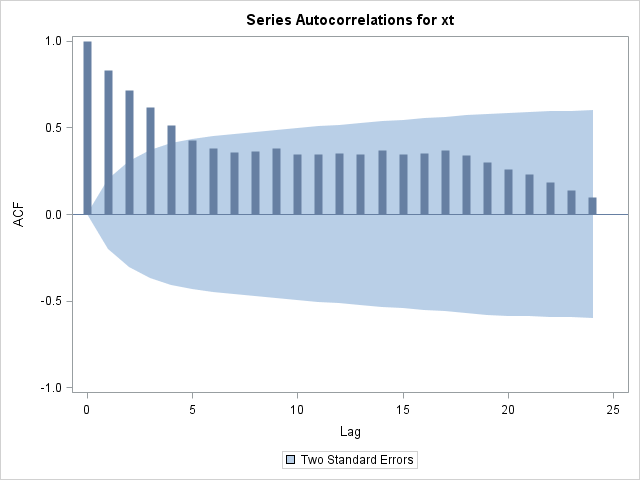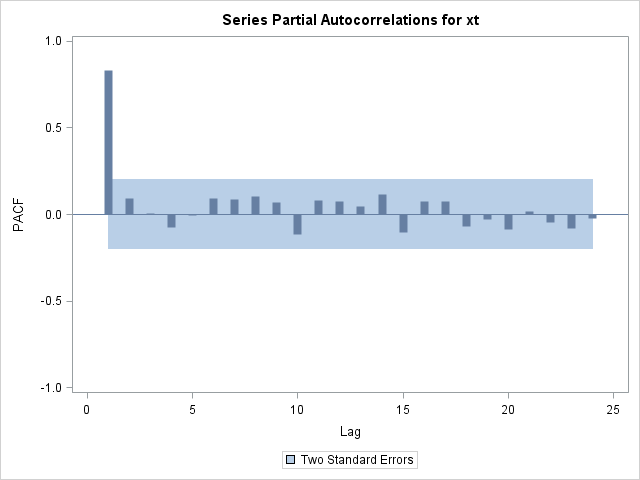The SHEWHART Procedure
You can diagnose autocorrelation with an autocorrelation plot created with the ARIMA procedure.
ods graphics on; ods select ChiSqAuto SeriesACFPlot SeriesPACFPlot; proc arima data=Chemical plots(only)=series(acf pacf); identify var = xt; run; quit;
Refer to SAS/ETS User's Guide for details on the ARIMA procedure. The output, shown in Figure 17.192 and Figure 17.193, indicates that the data are highly autocorrelated with a lag 1 autocorrelation of 0.83.
Figure 17.192: Autocorrelation Check for Chemical Data
| Individual Measurements Chart |
The ARIMA Procedure
| Autocorrelation Check for White Noise | |||||||||
|---|---|---|---|---|---|---|---|---|---|
| To Lag | Chi-Square | DF | Pr > ChiSq | Autocorrelations | |||||
| 6 | 228.15 | 6 | <.0001 | 0.830 | 0.718 | 0.619 | 0.512 | 0.426 | 0.381 |
| 12 | 315.34 | 12 | <.0001 | 0.360 | 0.364 | 0.380 | 0.347 | 0.348 | 0.354 |
| 18 | 406.76 | 18 | <.0001 | 0.349 | 0.371 | 0.348 | 0.353 | 0.368 | 0.341 |
| 24 | 442.15 | 24 | <.0001 | 0.303 | 0.261 | 0.230 | 0.184 | 0.141 | 0.098 |
The partial autocorrelation plot in Figure 17.193 suggests that the data can be modeled with a first-order autoregressive model, commonly referred to as an AR(1) model.
You can fit this model with the ARIMA procedure. The results in Figure 17.194 show that the equation of the fitted model is ![]() .
.
ods select ParameterEstimates; proc arima data=Chemical; identify var=xt; estimate p=1 method=ml; run;

